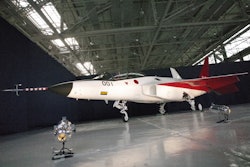With 2016 upon us, I’ve been combing analysts’ predictions of changes they see coming to the manufacturing industry — and combining them with my own observations of how well today’s ERP technologies can support these changes. There’s no doubt: this is an exciting time in manufacturing. What would have seemed impossibly futuristic a few years ago is already happening on a few leading-edge factory floors today. Consider these trends… and start planning out your strategy for using them to gain competitive advantage.
Prediction 1: The Connected Economy Will Become More Pervasive — and Available
With IDC projecting that the global Internet of Things (IoT) market will be worth $1.7 trillion by 2020, enterprises from all sectors are embracing the opportunity to deliver and take advantage of the connected economy. Once thought of as the domain of large enterprises, the connected economy is now wide open to midsize companies, as well — especially those in the manufacturing sector. Leveraging cloud technologies to connect employees, customers, partners and devices together is fast creating new ways of doing business. Never before has there been a greater opportunity for innovative manufacturers to quickly and economically become part of the connected economy, driving their company’s growth and exceeding their customers’ expectations.
For example, the Scott Fetzer Electrical Group decided to build “smart” products so they could track service requests and, with the information on-hand, build better products. To accomplish that, the company knew its first step would have to be upgrading its back-office systems, including ERP. Only with the right ERP could the company achieve the integration it needed to join the connected economy.
Prediction 2: Complex Multi-Modal Products Will Require Companies to Support New Business Models
The changing market for products and services means businesses must move from a single SKU per product to a bundled product with affiliated services (warranty, monitoring) and subscriptions. Organizations’ existing back-office systems, including ERP, will need to adapt to this new business model and support effective management and monetization of bundled and multi-modal products. For example, a division of Philips is implementing cloud-based ERP specifically to address new revenue opportunities with the connected economy and ensure they can track product, subscription and service components in one system.
Prediction 3: The New “Subscriber Culture” Will Change Customers’ Expectations
Until recently, the customer relationship was something that businesses often worried about after the transaction happened — how to maintain and enhance the value of future business. With the growing popularity of long-term subscription models, businesses must adapt continuously to align with what brings value to the customer. As a result, businesses will need a better ERP — one that’s agile enough to support the rapid creation of new products and services. An ERP that has integrated configure, price, quote (CPQ) capabilities will enable customers to easily order products, and for businesses to let the customer know when to expect delivery.
Prediction 4: ERP Will be Key to Transforming Real-Time Analytics Into Competitive Advantage
Companies have already begun to receive real-time analytics from IoT on the manufacturing floor and throughout the supply chain. ERP — specifically, cloud-based ERP solutions — can play a critical role in helping decision-makers leverage this real-time data at every stage in the manufacturing and sales cycle.
On the factory floor, sensor-embedded factory equipment can communicate data about parameters such as the temperature and utilization of the machine, so companies can change equipment settings and process workflow to optimize performance. On the customer side, IoT provides manufacturers unprecedented access to data on how people are actually using their products, enabling them to refine their offerings to better suit individual customers or markets. And for consumer goods businesses, access to real-time data about inventory and third-party data about competitive pricing can help manufacturers make better use of trade promotions to incentivize distributors and boost sales.
Prediction 5: More Companies Will Adopt Right-Shoring
The need to maintain competitive advantage will lead more companies to right-shoring approaches: locating manufacturing and distribution activities where they can be performed to the required level of quality, as cost efficiently as possible, in a place that’s logistically convenient.
Right-shoring may seem complex. But the power of incrementally adding value in a location best suited for each step produces the lowest-cost, highest-quality and most reliable result. To maintain agility while dividing up product manufacturing and distribution down to the component level requires the capability to easily track multiple components and manage a supply chain. Companies must have scalable, cloud-based ERP systems to support easy, rapid deployment and turn-on-a-dime changes across multiple locations and suppliers.
Prediction 6: Cloud ERP Will Help Companies Leverage Manufacturing-as-a-Service
The Manufacturing-as-a-Service model enables businesses to use a factory and pay only for the production time they need, rather than investing capital up front in building or buying a facility that they don’t yet need 24/7. This data-intensive model has been out of reach for most companies, but that’s changing. Adoption of cloud ERP — as well as increased machine learning, adoption of IoT sensors and supporting data models, and advanced intelligence— makes it easier for companies to interpret and act on data, and brings the benefits of this cost-effective model within reach for more companies.
Get Ready to Mesh
In looking at trends in 2016, Gartner describes a “digital mesh,” which it defines as “an expanding series of devices, services, platforms, informational networks and individuals that integrate together and provide contextual intelligence and enable greater collaboration.” In 2016, we’ll see manufacturers weaving together their own digital mesh, with cloud ERP helping to provide the strands that connect diverse elements throughout an enterprise, from sensors on the shop floor to data warehouses, analytics software, and sales people’s mobile devices. It’s this mesh, rather than just the individual components woven in to it, that will create 2016’s distributed, collaborative and agile manufacturing businesses — and industry-leading companies.
Stewart Florsheim is VP of Marketing at Kenandy.























